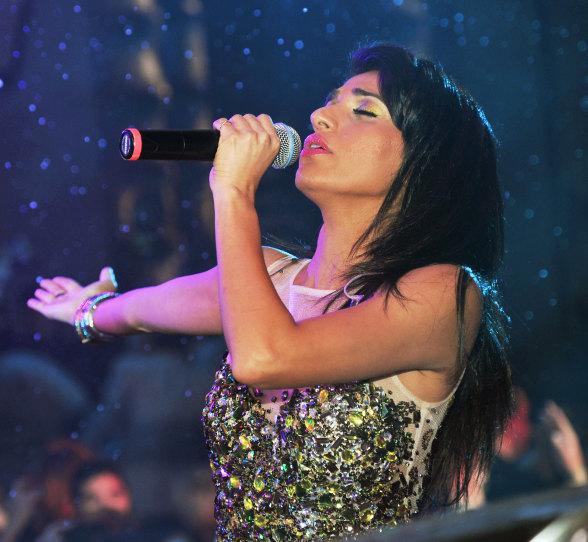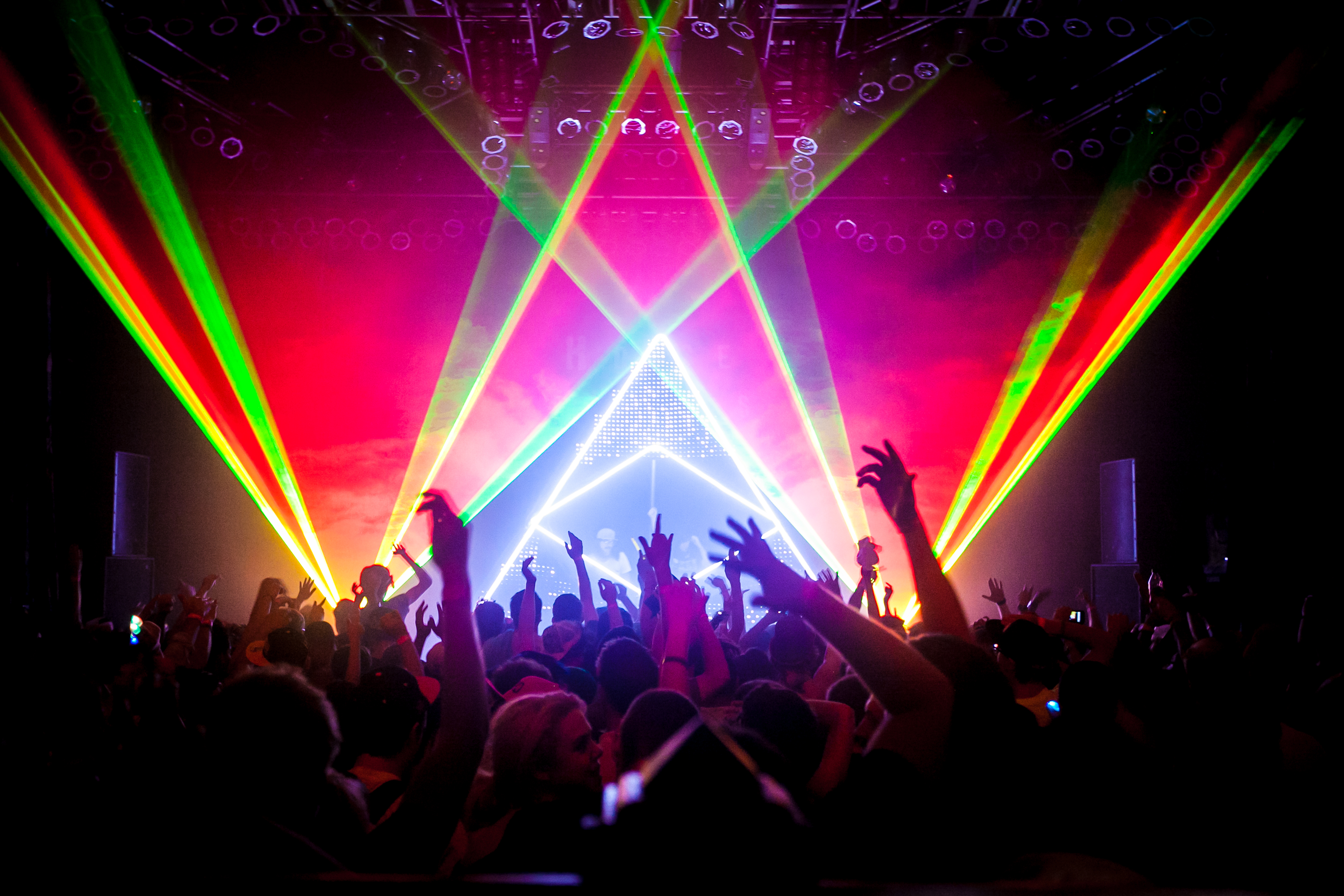Editor’s Note: Thank you for all the interest on this article via Facebook and Twitter–we appreciate your support! We would have loved to include all of the incredible artists you mentioned in your tweets, but this article was more about the theme of women in the EDM scene rather than specific musicians–the artists we included were simply to illustrate a point rather than single out individual people for their contributions to dance music.
This recent business with Paris Hilton has created waves of uproar in the EDM community. Historically, the spoiled heiress has gotten everything she’s wanted–television shows, fashion lines, fame itself–and then lost it. Far from lurking on the outskirts of infamy for long, though, Paris decided to delve into another unexplored and quickly rising scene, announcing her intent to become a DJ and even dating Dutch house superstar Afrojack. After a few embarrassing photos and videos of her spinning at various parties–often with a more experienced mixer running behind the scenes to save her image–emerged, the media backlash was intense: facing criticism from producers, production companies and other prevalent faces in EDM media, Paris lost her boyfriend and her DJ career in one fell swoop. It’s got me thinking: what is the role of women in the EDM world? Surely not everyone is a blonde bimbo a la Paris–but are female musicians’ talents recognized as readily and heavily as mens’?
Women have always been in the minority in the EDM world. While a few big names have managed to break that “glass ceiling” and carve their own paths, by and large, women have remained sideshows rather than centerpieces within EDM culture. More frequently appearing as gogo dancers or vocalists than producers or DJs, women are frequently seen as symbols of beauty rather than formidable talents in their own right. This is partially due to the sexist, patriarchal society that EDM emerged out of: in most developed countries in the world, women still don’t have the privilege of de facto equal treatment with men–remnants of female oppression in law continue to be prevalent throughout Europe and North America, hampering their dreams of being regarded in the same league as men. This translates directly into EDM: at raves, many men show up in modest attire–t-shirts and jeans are common–but women wear skimpy bras and revealing underwear to shows, bedazzled with sparkles, feathers and other accoutrements and eager to show off their sex appeal. Yes, this is a personal choice–I see plenty of women at raves in drab attire–but just think: how did this end up becoming the standard attire of women in EDM? My guess is it’s not entirely feminist empowerment.
When it comes to women actually producing in the EDM world, women are marginalized as well. It may well be the case that many women simply aren’t interested in making music themselves, but to me that seems unlikely. My most educated guess assumes that women just aren’t afforded the same opportunities as men–though this may not be obvious at first, it’s a more subtle and insidious form of oppression. Most frequently, women are found as vocalists and supporting artists in EDM tracks, rather than as actual producers. The sentiment is that a woman shouldn’t be the mastermind behind the genius of the track, but instead should just be the figurehead–the fantasy–through which sex appeal can be channeled for a primarily male audience.
Of course, there are notable exceptions to this rule. As with any scene, there are numerous powerful women who have worked hard to make names for themselves and create an empire of their own. Perhaps the name that most readily comes to mind is Nadia Ali–a beautiful, hardworking artist who’s been in the scene for decades, Nadia has consistently forged ahead, producing tracks and performing live since her work with her own band iiO. Another notable female producer is famous As the Rush Comes vocalist JES–while her two solo albums are relatively unknown except to diehard fans and her side projects make it difficult to distinguish her as an artist, JES has one of the most unique and interesting live shows I’ve seen: she actually mixes and sings at the same time, a feat which is certainly not easy to conduct, given the extreme amount of attention that each of those contrasting sets of skills requires. Another mainstay in the trance world is Justine Suissa, the vocal head of Above & Beyond‘s chill trance project OceanLab–but long before that, she appeared on tracks by legends like Armin van Buuren and Chicane as far back as 2000.
Female producers are quite hard to come by, though they certainly exist. Kristina Sky spun a headlining set at Electric Daisy Carnival in Las Vegas a few weeks ago, putting together an uplifting and beautiful trance set that was one of the highlights of the A State of Trance tent during the entire festival. Australian sisters NERVO have managed to make a quite impressive name for themselves, producing outstanding tracks and remixes with a punky style and attitude that’s entirely their own–We’re All No One manages to sound like no one I’ve heard, and You’re Gonna Love Again is frequently confused with Swedish pop-house legend Avicii, simply on the strength of its entrancing production alone. In my mind, NERVO is the perfect inspirational figure for women looking to emerge in the EDM world: managing to appear sophisticated and edgy without being pandering, these lovely ladies have distinguished themselves from the crowd without alienation. Perfect to demonstrate this is NERVO‘s brand new music video for You’re Gonna Love Again: challenging traditional female beauty norms, the sisters appear hear as strong, confident women, alongside various people of diverse background gathered together to share the love of EDM–and that’s really what it’s all about.
As a whole, I see women advancing much further in the EDM world than they did in the past–more opportunities are afforded to them, and with the increasing diversity of sounds, shows and musical styles, it’s easier than ever for women to forge ahead and create unique personas. Additionally, the PLUR ethos itself has “respect” right in the statement–EDM tends to be a much more progressive movement than many musical trends of past decades. The scene isn’t perfect, though; shades of patriarchal society still seep into the cracks of EDM’s stronghold, implanting hegemonic ideals of oppression into the minds of millions around the world. As long as this remains the status quo, EDM won’t budge–and, sadly, that isn’t something we can affect on our own–but by opening our minds and hearts to the beauty and talent of individuals based on their own personal merits, we can hopefully break a barrier, burn a bridge, and dissolve the artificial walls between the sexes.
Note: When moving to new servers we sadly lost some of our old posts, for that reason we will be sharing some of the very early Your EDM editorials and artist spotlights once again!








